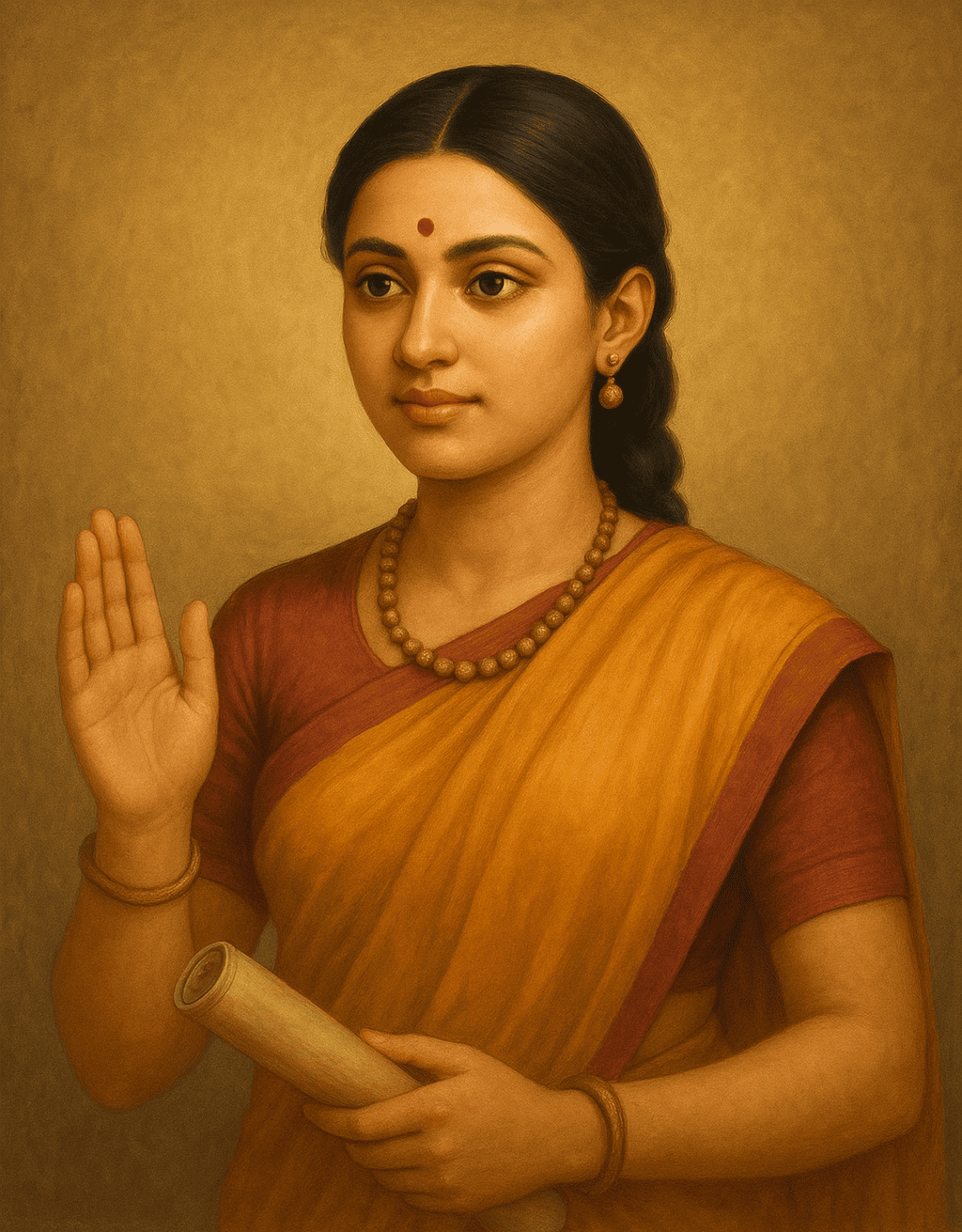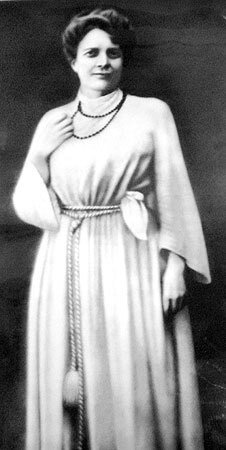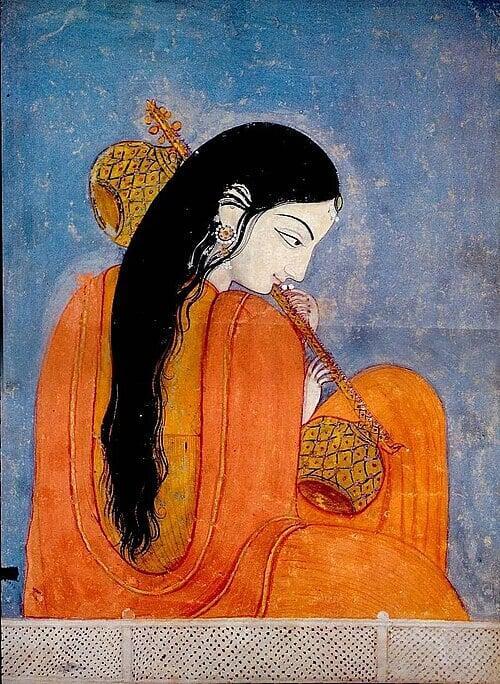The blog centres on the theme of the Divine Mother. It features a video message from Swami Shantatmananda, a Hindi poem, a short history of mother worship in Bengal and a reflection. It also highlights inspiring women saints from India through a short quiz.
Swami Shantatmananda reveals the significance of Divine Mother worship
The Origins of Mother Worship in Bengal
Written and illustrated by Saswati Ghosh from Delhi
In Bengal, the worship of the Mother, is not a ritual alone - it is a heartbeat that echoes through eternity. From the earliest days, when farmers bowed before Dharti Ma for harvest, and boatmen sought the blessings of Ganga Ma before their journeys, the Divine Feminine was seen as the giver of life, the one who nurtures and protects. Village goddesses like Chandi, Manasa, and Shitala held the people close, assuring them that the Mother never abandons her children.
With the rise of Tantra in Bengal between the 6th and 10th centuries, these folk beliefs intertwined with the spiritual philosophy of Shakti. The Goddess was no longer only the village guardian; she became eternal Adi Shakti, the primordial energy of the universe. Temples like Kalighat in Kolkata, Tarapith in Birbhum and Kamakhya in Assam became famous centres of Shakta worship, where the Mother was adored in her fierce and compassionate forms.
Durga Pujo, as Bengal knows it today, blossomed in the medieval era. Historical accounts mention the first grand household pujo organized by Raja Kangshanarayan of Taherpur and Bhabananda Majumdar of Nabaddeep in the 16th century. By the 18th century, wealthy zamindars of Calcutta- such as the Sabarna Roy Choudhury family- made Durga Pujo a festival of both devotion and social gathering. Over time, the ‘baroari pujo’ (community worship) emerged, making the celebration accessible to all.

What makes Bengal’s mother worship unique is its intimacy. The Goddess is both Mahishasura Mardini, fierce and victorious, and Uma, the tender daughter returning home. This dual vision is Bengal’s gift to the world: the Mother as cosmic power, yet also as a beloved family member whose arrival brings tears of joy.
Even today, when the conch blows and the dhak beats, Bengalis feel more than seasonal festivity; they feel eternity descending into the present. In the clay idol that dissolves back into the river, they see the eternal cycle of life, death, and rebirth. Mother worship in Bengal is thus not history alone; it is the timeless recognition that the Divine Feminine is both our origin and our destiny.
या देवी सर्वभूतेषु मातृरूपेण संस्थिता ।
नमस्तस्यै नमस्तस्यै नमस्तस्यै नमो नमः ॥
To that Goddess who dwells in all beings as the eternal Mother
Salutations to Her, salutations to Her, again and again, forever.
Thoughts on the Condition of Women in Society and the Prevalence of ‘Devi’ Worship in India
by Sobha Menon from Delhi
It’s the season of Devi worship in all her different forms – as Durga, Lakshmi, Saraswati, Kali. A time when both women and men, with equal gusto, participate in rituals and festivities to celebrate the Divine Feminine in a manner unseen in any other religion. It draws the attention of people around the world – sometimes with delight, sometimes with scepticism and derision at the contradictions between the fervour and enthusiasm for such worship and the unceasing incidents of gender abuse in our society.
So, how has the tradition of Devi or Shakti worship endured for centuries despite such contradictions? We find that every time the message behind important traditions weakens, our spiritual leaders rise to re-emphasise their significance. More than a hundred years ago, Swami Vivekananda had said: “Without Shakti...there is no regeneration for the world.” Was he talking about Shakti in just the divine form? No.
शुभागमन
by Shilpi Sharma from Gurugram
शरद आगमन,
है अब आंगन ,
ग्रीष्म थोड़ी अलसाई है ।
शुभता आलता,
रंगे चरण कमल,
देहरी पावनता पाई है ।
थके मेघ है, तृप्त है धरती,
चहुं ओर छटा हरियाई है ।
मन हर्षित है, तन उर्जित है,
शीतल बयार इठलाई है ।
भानु स्वयं मां मार्ग बुहारे,
उषा वंदन में चरण पखारे।
मधुर मारुत के स्वरों ने मिलकर ,
मंगला आरती गाई है ।
संध्या का धैर्य पूर्ण हुआ ,
मां ने चन्द्र का शीश छूआ ।
जगमग तारों की जोत जलाकर ,
सप्त ऋषियों ने पूजा थाल सजाई है ।
तू जननी, तू पालक है मां ,
भूल क्षमा कर, हम बालक है मां ।
मैं तुमको पूजूं , तुम मुझे दुलारो,
मंगल बेला आई है ।
Quiz on Women Saints of India
Share your thoughts in the comments box below
The Divine Mother and You
What does the idea of the Divine Mother mean to you personally?
The Ideal and Practice
Do you think our worship of Devi matches how women are treated today? Why or why not?
Your Role Model
Is there an inspiring woman who reminds you of Shakti? Share her story with us!





